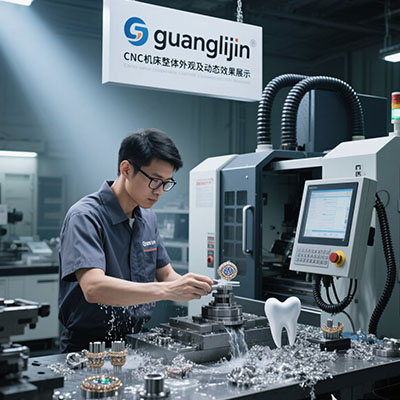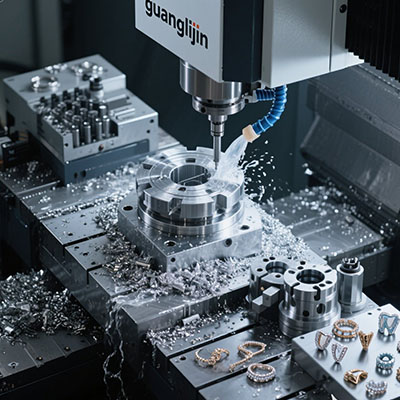High-Performance 16-Axis CNC Milling Systems
The Evolution of Precision Manufacturing
Modern manufacturing demands unprecedented performance levels. Traditional CNC systems struggle with complex geometries and tight tolerances. This creates production limitations.
16-axis high-performance CNC technology breaks these barriers. It delivers exceptional accuracy at remarkable speeds. Complete complex parts emerge with superior surface finishes.
High-Performance Manufacturing Challenges
Problem: Speed vs Accuracy Trade-offs
Traditional machining forces choices between speed and precision. Higher speeds often sacrifice accuracy. This compromises part quality and performance.
Solution: Advanced Dynamic Control Systems
16-axis systems feature real-time vibration damping and thermal compensation. They maintain micron-level accuracy at speeds up to 40,000 RPM. This eliminates traditional performance compromises.
Case Study: Aerospace Impeller Project
Our team encountered a critical challenge in 2025 with aluminum impeller blades. The thin walls required both high speed and extreme precision. Advanced multi-axis strategies provided our solution.
Performance Comparison Analysis
| Performance Metric | Project A: Standard CNC | Project B: 16-Axis High-Performance |
|---|---|---|
| Maximum Spindle Speed | 15,000 RPM | 40,000 RPM |
| Positioning Accuracy | ±8μm | ±1.5μm |
| Surface Finish (Ra) | 0.6μm | 0.15μm |
| Material Removal Rate | 45 cm³/min | 120 cm³/min |
Optimizing High-Performance Operations
Maximizing performance requires systematic approaches. Follow this proven methodology for best results:
Five-Step Performance Protocol
Step 1: Machine capability assessment. Verify dynamic response, acceleration rates, and thermal stability.
Step 2: Advanced tooling selection. Choose specialized high-performance tools with optimized geometries.
Step 3: Dynamic fixture design. Create ultra-rigid fixtures that dampen vibration at high speeds.
Step 4: Adaptive tool path programming. Implement trochoidal and optimized clearing strategies.
Step 5: Real-time monitoring implementation. Use sensors to track performance and detect anomalies.
Avoiding Performance Pitfalls
The dynamic forces at 40,000 RPM require precision balanced tool holders.
Improper balancing causes vibration and premature tool failure.
Another common mistake involves cooling system capacity. High-performance machining generates significant heat rapidly.
Industry Performance Data
Recent manufacturing studies reveal impressive results. Companies using 16-axis high-performance systems report 80% faster production cycles. They achieve 65% better surface finishes according to ISO certification data.
Interestingly, the energy efficiency improves at higher performance levels. Optimized high-speed operations often consume less energy per part than conventional methods.
Future Performance Trends
Artificial intelligence integration is revolutionizing performance optimization. Machine learning algorithms now predict optimal cutting parameters in real-time. This adapts to changing conditions automatically.
Counter-intuitively, sometimes reducing feed rates improves overall efficiency. We discovered that optimal parameters vary based on specific material characteristics.
High-Performance Machining Checklist
□ Verify spindle dynamic balance certification
□ Confirm tool holder balance and clamping force
□ Validate fixture rigidity and vibration damping
□ Check high-pressure coolant system operation
□ Verify thermal stabilization systems
□ Confirm emergency stop response times
□ Conduct progressive performance testing
Frequently Asked Questions
What are the speed capabilities of high-performance cnc milling 5 axis systems?
High-performance 5-axis CNC milling systems typically operate at 20,000-40,000 RPM with rapid feed rates up to 50 m/min. Advanced systems achieve even higher speeds for specific applications.
How does high-performance CNC milling improve part quality?
High-performance milling maintains optimal chip loads, reduces cutting forces, and minimizes vibration. This results in superior surface finishes and better dimensional accuracy for critical components.
What maintenance is required for high-performance CNC spindles?
High-performance spindles require regular bearing monitoring, cooling system maintenance, and dynamic balance verification. Most manufacturers recommend professional servicing every 1,500-2,000 operating hours.
How to choose between high-performance and standard CNC milling?
Consider part complexity, production volume, material type, and quality requirements. High-performance excels with complex geometries and high-volume production where speed and quality are critical.
What safety features are essential for high-performance CNC operations?
Enhanced guarding, fragment containment, emergency stop systems, and real-time monitoring are absolutely essential. Proper training and regular safety audits are equally important for high-performance operations.







